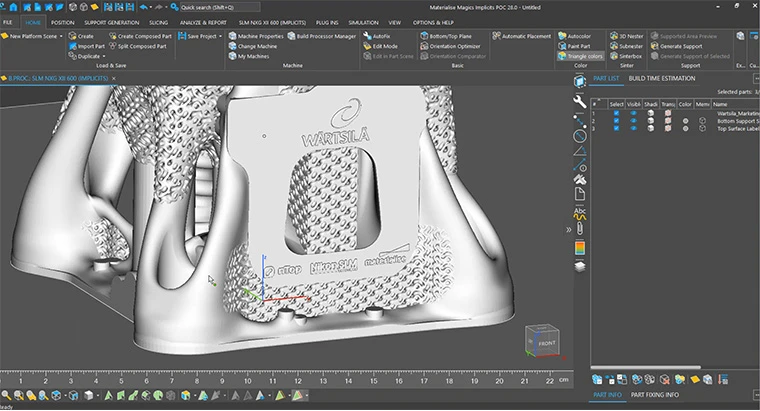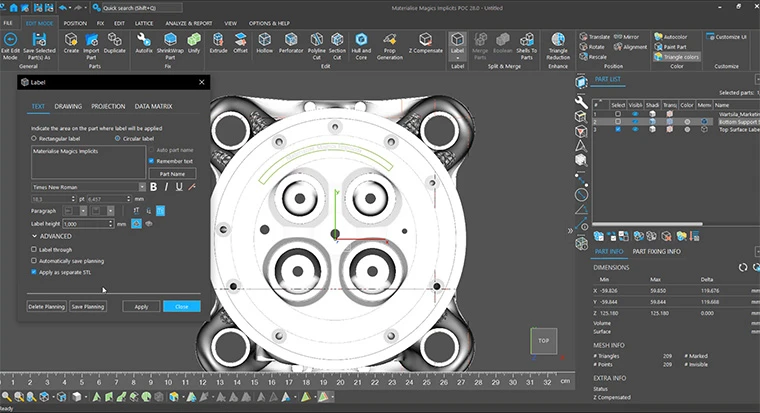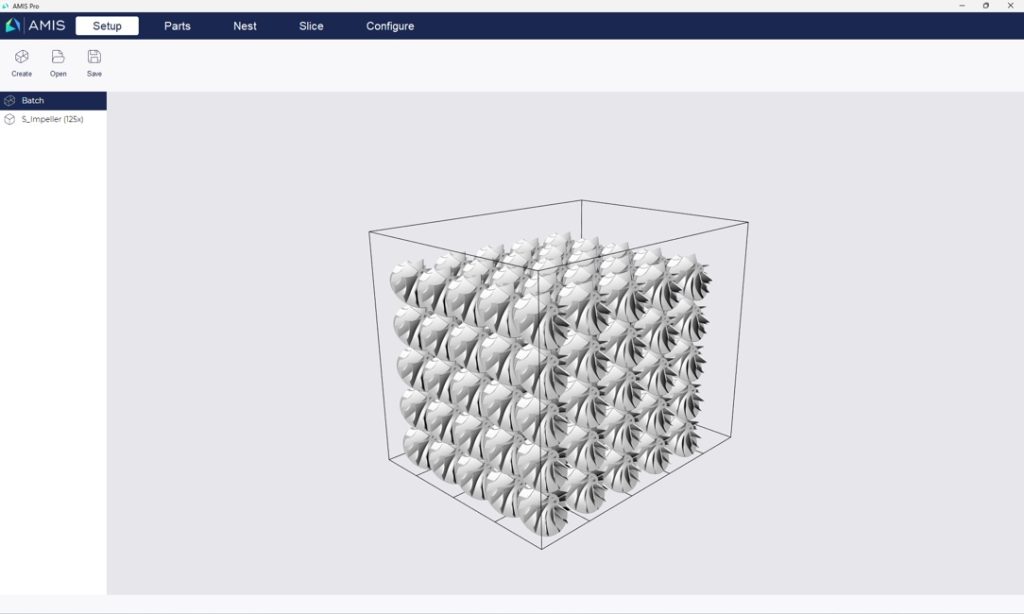Materialise, a global leader in 3D printing software and services, has introduced significant software updates and forged key partnerships to enhance customization in 3D printing operations. Announced recently, these enhancements enable users to develop tailored workflows within Magics software, safeguard intellectual property of component designs, and produce high-performance geometries. Additionally, Materialise has partnered with HP, a prominent technology company, to mitigate CO₂ emissions by utilizing carbon-reduced PA 12 materials.
“3D printing is evolving from a focus on technology innovation to becoming an essential tool in industrial applications,” said Udo Eberlein, Vice President of Materialise Software. “The next phase is about empowering users to adapt this technology to their specific manufacturing needs. With our latest updates, we’re providing the tools and flexibility to help them meet these unique requirements. This ‘Power to the People’ approach underscores our commitment to enabling manufacturers to achieve precise, impactful results in their production workflows.”
Additive manufacturing is increasingly integrated into production lines for mass customization and end-use production across sectors such as MedTech, aerospace, and consumer goods. To support optimization efforts, Materialise has released the Software Development Kit (SDK) for Magics, its premier software for data and build preparation. This release allows manufacturers to create custom workflows using Python and C++ scripts, optimizing parameters like quality and printing time to meet specific production requirements.

“We’ve seen tremendous potential for businesses to optimize their workflows with the Magics SDK, enabling enhanced manufacturing processes and substantial improvements in ROI,” said Egwin Bovyn, Product Line Manager for Magics 3D Print Suite. “At Materialise, we’ve customized our SDK to optimize data and build preparation in our own manufacturing operations. By sharing our algorithms via Python code, we enable the automation of data and build preparation at scale. These advanced automation tools empower manufacturing service providers by ensuring our technology meets their individual needs.”
Sustainability Initiatives Reduce CO₂ Emissions in Manufacturing
Sustainability remains a core focus for Materialise. The company has transitioned to renewable electricity across its production sites, reducing over 4,000 tonnes of CO₂ annually. Collaborations with suppliers like HP are pivotal in further lowering the environmental impact of 3D printing materials. Earlier this year, Materialise began using carbon-reduced PA 12 for Multi Jet Fusion (MJF) processes, with plans to extend this to Selective Laser Sintering (SLS) PA 12 by early 2025, potentially reducing their carbon footprint by over 700 tonnes each year.
In 2023, Materialise launched its CO-AM platform, a cloud-based software solution designed to manage and optimize the entire additive manufacturing process. This platform offers tools for planning, scheduling, and monitoring production, reflecting the company’s dedication to providing comprehensive solutions for industrial 3D printing operations. Additionally, an
expanded partnership with Siemens, a global technology powerhouse, aims to integrate additive manufacturing into digital factory environments, enhancing efficiency and scalability for industrial users.

New 3D Software Innovative Solutions
Roboze, a metal 3D printing company, launched SlizeR software in 2024 to boost AM efficiency and quality. SlizeR optimizes production workflows by reducing transition times from 3D models to R-code, enhancing print quality, and minimizing material waste. The software was introduced at Formnext 2024 and is designed to support Roboze’s manufacturing solutions.
3iD, a Belgian 3D printing service provider, became the first to adopt AMIS Pro software for HP Multi Jet Fusion (MJF) 3D printers in early 2024. Developed by AMIS, a subsidiary of HYBRID Software, AMIS Pro facilitates batch preparation and optimizes print parameters. The software allows 3iD to achieve higher nesting densities and reduce cost-per-part, enhancing the efficiency of their MJF 3D printing processes.

Your voice matters in the 2024 3D Printing Industry Awards. Vote Now!
What will the future of 3D printing look like?
Which recent trends are driving the 3D printing industry, as highlighted by experts?
Subscribe to the 3D Printing Industry newsletter to stay updated with the latest news and insights.Stay connected with the latest in 3D printing by following us on Twitter and Facebook, and don’t forget to subscribe to the 3D Printing Industry YouTube channel for more exclusive content.
Featured image shows High-quality label placement in Materialise Magics. Photo via Materialise.

